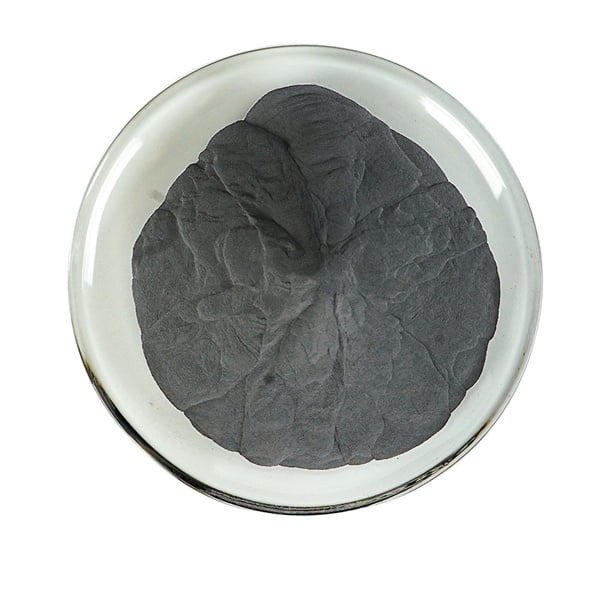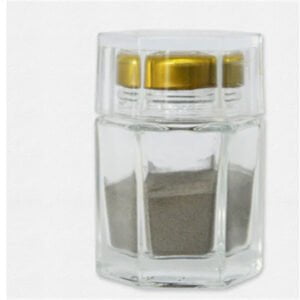Utrustning för gasatomisering
Innehållsförteckning
utrustning för gasatomiserare producerar fina sfäriska metallpulver med kontrollerad partikelstorleksfördelning som är avgörande för metall AM, termisk sprutning, MIM och andra pulvermetallurgiska tillämpningar. Den här guiden omfattar processprinciper, atomisatortyper, systemkomponenter, driftsparametrar, tillverkare och jämförande utvärdering.
utrustning för gasatomiserare Översikt över processen
Gasatomisering använder kinetisk energi från gasstrålar med hög hastighet för att sönderdela smälta metallströmmar till fina droppar som snabbt stelnar till pulver:
| Princip | Uppdelning av metallström i fina droppar genom gasimpingement |
| Typ av gas | Kväve, argon |
| Metalltyper | Nickel-, järn- och koboltlegeringar |
| Vågskålar | Labb, pilot, industri |
| Pulveregenskaper | Kontrollerad PSD, hög sfäricitet, ytkemisk enhetlighet |
| Partikelstorlekar | 3 mikrometer till 120 mikrometer |
| Produkter | Legeringspulver, masterlegeringar |
| Industrier | Metall AM, MIM, beläggningar |
Gasatomiserade pulver ger exakt kontroll över egenskaperna, men kräver högre kapitalinvesteringar än andra atomiseringstekniker.

utrustning för gasatomiserare Typer
| Atomiserare | Detaljer |
|---|---|
| Nära kopplad | Integrering av munstycke och gas möjliggör mycket fina pulver på 20 mikrometer |
| Fritt fall | Ström av smält metall faller genom gaskammare för stödfri drift |
| Rotary | Tillförlitlig prestanda för höglegerade stål via roterande metallgjutrör |
Framväxande mönster
Klusterdosering med flera munstycken och centrifugaldosering ökar produktiviteten. Ultraljudsatomisering och gasatomisering med induktionselektroder förenklar produktionen av pulver med fritt fall.
Systemkomponenter
Viktiga moduler i kompletta industriella gasatomiseringssystem inkluderar:
| Komponent | Roll |
|---|---|
| Smältugn | Induktionssmältning av metaller till överhettat tillstånd |
| Munstyckesmontering | Kontrollerar inmatning av smält metallström i gaskammaren |
| Gasreglering | Reglerar gastyp, tryck och flödesdynamik |
| Solidifiering av droppar | Snabb kylning förvandlar droppar till pulver |
| Uppsamlingssystem | Siktning separerar pulver efter partikelstorlek |
| Baghouse | Fångar ultrafina fasta partiklar från avgaser |
| Återvinning | Återinför oanvänd gas och överdimensionerade partiklar |
Exakt övervakning och tätt integrerad återkopplingskontroll mellan ovanstående moduler är avgörande för att pulverkvaliteten ska vara jämn.
Processparametrar
| Parameter | Typiskt intervall | Påverkan |
|---|---|---|
| Metallens temperatur | 30-100°C överhettning | Flytbarhet, ytoxidation |
| Munstyckets öppningsstorlek | 2 mm-6 mm | Droppstorlek, flödesdynamik |
| Typ av gas | N2, Ar | Avkylningshastighet, ytkemi |
| Gastryck | 5-15 barg | Fördelning av partikelstorlek |
| Flödeshastighet för gas | 0,1-3 m3/min | Atomiseringseffektivitet och avkastning |
| Fallhöjd | 2-10m | Stelningstid och pulveregenskaper |
Det ömsesidiga beroendet mellan dessa parametrar kräver empirisk optimering med hjälp av beräkningsmodeller för att uppnå pulverkraven.
utrustning för gasatomiserare Leverantörer
| Företag | Kapacitetsintervall | Kostnadsberäkning |
|---|---|---|
| AP&C | 10 kg/timme - 300 kg/timme | $750.000-$4 miljoner kronor |
| PSI | 25 kg/timme - 500 kg/timme | $950.000-$6 miljoner |
| Gasbarre | 50 kg/timme - 1000 kg/timme | $1,2 miljoner - $8 miljoner |
| Bühler-koncernen | 500 kg/timme - 35.000 kg/timme | $6 miljoner+ |
Större produktionsskalor har exponentiellt högre prislappar. Betydande specialanpassad teknik krävs.
Jämförande bedömning
| Nära kopplad Atomizer | Fritt fall-atomiserare | |
|---|---|---|
| Investeringskostnad | Hög | Medium |
| Komplexitet | Hög - Integrerad munstycks- och gasdesign | Medium - frikopplade komponenter |
| Underhåll | Utmanande - Hantering av hela fartyg | Enklare - modulära delar |
| Produktivitet för fina pulver | Högre | Medium |
| Flexibilitet i materialet | Medium - Begränsas av risken för igensättning av munstycket | Hög - öppen arkitektur |
| Övervakning av processer | Tät processkontroll möjlig | Förlitar sig mer på karaktärisering |
Viktiga slutsatser
- Precis partikelteknik med stor flexibilitet gör gasatomisering till en kraftfull men kostsam teknik
- Integrerad modellering och övervakning möjliggör kvalitetspulver med snäva specifikationer
- Skalbarheten är fortfarande en viktig begränsning för små, medelstora och stora gasförstärkare

Vanliga frågor
F: Vilken storlek på gasatomiseringssystem är bäst lämpad för AM-pulver i metall?
S: Labbatomisatorer i bänkskåp med en skala på 1-5 kg/timme är lämpliga för FoU. För kommersiell AM-produktion av metall balanserar finfördelare på 50-200 kg/timme kraven på genomströmning, kostnad och pulverkvalitet.
F: Vilket gastryck används vanligtvis vid finfördelning?
S: De flesta gasatomiseringar använder tryck på 5-12 barg. Högre tryck möjliggör finare pulver men kräver tyngre kärl. Argon ger snabbare värmeutvinning än kväve.
F: Hur liten kan partikelstorleken för gasförstärkare nå?
S: Ledande tätkopplade munstycksfördelare har visat konsekvent produktion av metallpulver som närmar sig 15-20 mikrometer samtidigt som de fortfarande bibehåller rimliga avkastningsprocent.
F: Vilka metaller är inte lämpliga för gasatomisering?
A: Högreaktiva legeringar som titan- och aluminiumlegeringar innebär oxidationsutmaningar och risk för igensättning av munstycket. Smältning av induktionsskalle hjälper till att lindra dessa problem.
Dela på
MET3DP Technology Co, LTD är en ledande leverantör av lösningar för additiv tillverkning med huvudkontor i Qingdao, Kina. Vårt företag är specialiserat på 3D-utskriftsutrustning och högpresterande metallpulver för industriella tillämpningar.
Förfrågan för att få bästa pris och anpassad lösning för ditt företag!
Relaterade artiklar

Högpresterande segment för munstycksvingar: Revolutionerande turbineffektivitet med 3D-utskrift i metall
Läs mer "Om Met3DP
Senaste uppdateringen
Vår produkt
KONTAKTA OSS
Har du några frågor? Skicka oss meddelande nu! Vi kommer att betjäna din begäran med ett helt team efter att ha fått ditt meddelande.

Metallpulver för 3D-printing och additiv tillverkning
FÖRETAG
PRODUKT
cONTACT INFO
- Qingdao City, Shandong, Kina
- [email protected]
- [email protected]
- +86 19116340731












